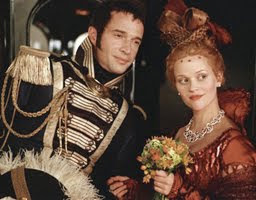 Letter from USA
Letter from USA Raj S. Rangarajan
NEW YORK: Move over Golden Globes, Bollywood Awards and Oscars. Its now the turn of the NRI TV Film Club Awards. For the first time in North America Non Resident Indian (NRI) creative talent among actors, directors, producers was recognized and celebrated with awards.
Till recently, most of the moral support for performers came from close friends, family and well-wishers. We now have a forum – The NRI TV Film Club – which debuted in December, that honored 15 non-competitive films made in the United States. Brainchild of Tirlok Malik - an actor himself - the NRI TV Film Club aspires to encourage local artists (read South Asian) amidst the plethora of avenues and talent potential available in North America.
 (L to R): Kishore Dadlaney, Producer of the film, Kehtaa Hai Dil Baar Baar, H. R. Shaw (TV Asia), Tirlok Malik (actor), Lal Dadlaney, co-producer of the movie and Video Sound, distributors and Sreenath Sreenivasan, Professor of Journalism at Columbia University.
(L to R): Kishore Dadlaney, Producer of the film, Kehtaa Hai Dil Baar Baar, H. R. Shaw (TV Asia), Tirlok Malik (actor), Lal Dadlaney, co-producer of the movie and Video Sound, distributors and Sreenath Sreenivasan, Professor of Journalism at Columbia University.This year’s NRI TV Film Awards function “was our first step and we were happy to honor all those who walked this way before us and all the filmmakers whose films reflected the immigrant experience,” said founder-president Malik.

 Keynoter Madhur Jaffrey and actor Tirlok Malik
Keynoter Madhur Jaffrey and actor Tirlok Malik “We not only aim to provide a platform for all related talent to showcase but also to nurture it and project it into the world.” This year’s NRI TV Film Awards function “was our first step and we were happy to honor all those who walked this way before us and all the filmmakers whose films reflected the immigrant experience,” said founder-president Malik, “We not only aim to provide a platform for all related talent to showcase but also to nurture it and project it into the world.” The NRI TV Film Club is for producers, directors, screenwriters, actors, editors, production personnel and everyone else allied with the world of cinema and television. Malik emphasizes the relation between the artist and the audience. “An artist needs an audience to succeed, and we hope our club will create that awareness to help the audience meet the artist.”
Modeled on the Academy Awards, the Awards celebration included clips of films, commentaries, live performances, a comedy routine and two emcees. Films that won were selected based on the immigrant experience theme. The event was presented by H. R. Shah of TV Asia, a well-known community activist in association with Video Sound who have signed up as the distributing arm for the club’s movies.
A splendid standup act by Daniel Nainan (dad is Indian, mother of Japanese origin) carried the day for several people who understood and applauded his kind of humor. While some were riveted to their seats, many were more interested in the cold samosas that were freely available outside the Grand Ball Room of Manhattan Center Studios. Among other performers were Anisha Nagarajan (Bombay Dreams), the play; Sheetal Shah (Arya), Alok Mehta (American Chai) and Padma Khanna, the Bollywood dancer who teaches dance in the United States now.
 Fusion Dance
Fusion DanceTirlok Malik has played more than 40 roles from an immigrant taxi driver to a lawyer to a porno shopkeeper. His first film Lonely in America grossed $20 million worldwide and was shown in 74 countries. He is motivated by the hope of helping other up-and-coming actors and producers specially after he had some unpleasant experiences with a distributing company. His second film Love, Lust & Marriage also continued the immigrant experience. A bachelor in Fine Arts, Tirlok has had professional training at the New York Academy of Theatrical Arts, The Actors Institute, the Weist Barron School of Television and the New School of Social Research.
Just as Indians are creating a presence in the world of mainstream cinema such as Manoj Night Shyamalan, Mira Nair, and Gurinder Chaddha, who have managed the crossover Malik, said, “We dream of achieving success together and developing a market for NRI films.”
Among the NRI fims that picked up awards were American Desi, directed by Piyush Pandya, Kehta Hai Dil Baar Baar, directed by Rahul Dholakia and produced by Video Vision, Piyu Gayo Paresh (Gujarati) directed by Kanu Chauhan, Lonely in America, directed by Barry Alexander Brown and produced by Tirlok Malik and Chander Malik.
Among the award presenters were Reeves Lehmann, Chair for the Film, Video and Animation Department at the School of Visual Arts, New York, Preeta Bansal, a former Solicitor General of the State of New York, Kamal Dandona, organizer of Bollywood Awards, Sreenath Sreenivasan Professor of Journalism at Columbia University, New York and Kanu Chauhan who organizes concerts for Indian-Americans and others.
[Raj S. Rangarajan is a New York based freelance writer. He covers trend stories on art, travel and lifestyles and reviews books, films and plays for media based in New York, California, Toronto, India and Australia.]





















